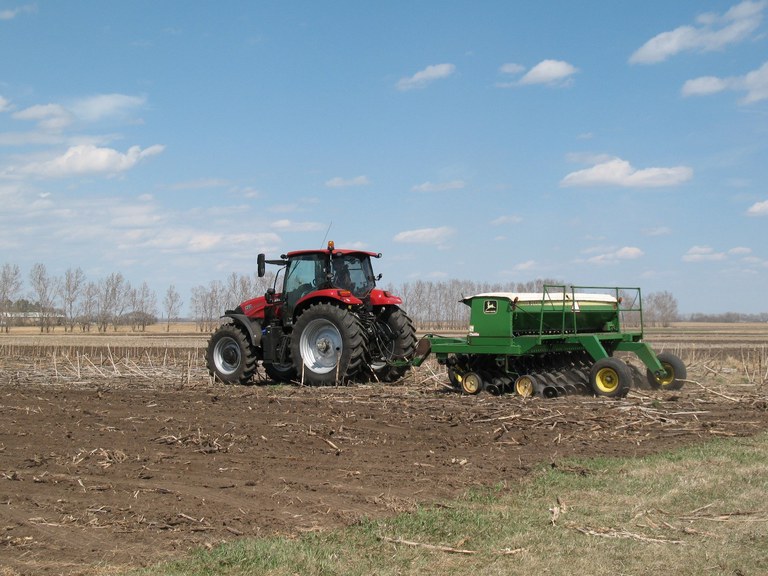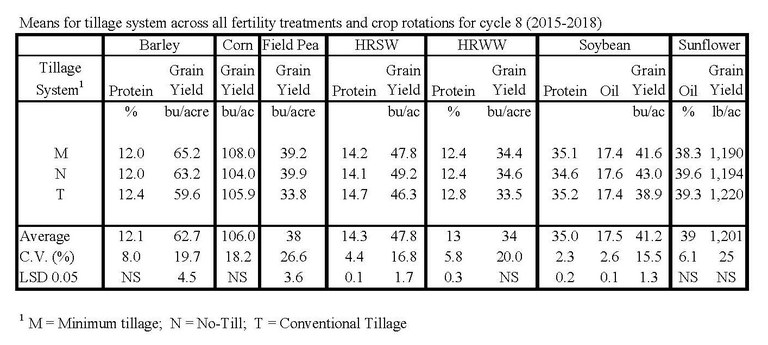Long-term Cropping Study – Tillage Systems at the Completion of Another Cycle
In 1987, a long-term cropping systems study started at the NDSU Carrington Research Extension Center. This is the longest replicated cropping systems trial in North Dakota.
Three sets of 4-year crop rotations are replicated three times each year. The eighth cycle ended in 2018. The original crop rotation, maintained until 2003, was: Hard Red Spring Wheat/Sunflower/Barley/Fallow. At the beginning of the fifth cycle in 2003, this crop rotation was updated to replace Fallow with Soybean. The other two current crop rotations are: Hard Red Spring Wheat/Field Pea/Corn/Soybean, and Hard Red Winter Wheat/Corn/Soybean/Hard Red Spring Wheat. Each crop within each rotation is planted every year.
The fertilizer treatments are: (1) urea broadcast applied each spring to all plots, except field peas and soybeans, at 0, 50, 100, or 150 pounds of N per acre and (2) composted beef feedlot manure applied once at 200 pounds of N the first year of each cycle. These treatments are imposed in strips perpendicular to the three tillage systems: conventional, minimum tillage, and no till resulting in 15 sub-plots within each crop.
We’re going to revisit tillage systems. This study is located on a Heimdal silt loam soil. The main plots are 180 ft. by 300 ft. and field scale equipment is used.
The conventional tillage system starts with disking to a depth of approximately three inches shortly after combining. This is followed by chisel plowing later in the fall prior to freeze up. In the spring, the ground is worked with a field cultivator prior to seeding or planting.
The current minimum tillage has become more of a rotational tillage system. It was changed to reflect current reduced tillage farming practices of the area. It is essentially not tilled except for the fall prior to the corn and sunflower rotations. That fall and the following spring it is worked just like the previously mentioned conventional tillage treatment.
The no-till treatment is just as it sounds: there is no tillage performed except what disturbance is created by the disk drill or planter. Instead of tillage, a chemical burn down with herbicides is performed in the fall for weed control after combining and again in the spring for weed control prior to seeding.
 Seeding barley. Conventional tillage in foreground and no-till under the tractor and drill.
Seeding barley. Conventional tillage in foreground and no-till under the tractor and drill.
Conventional tillage exhibits less than 30% residue cover after planting and the no-till system has greater than 80% residue cover after planting.
For each tillage system, appropriate herbicides are used for weed control within the crop production season.

As you can see from the cycle eight table above there was no negative impact on grain yield when reducing tillage. Reduced tillage did statistically impact protein content of soybean (positively) and the wheat (negatively, yet not enough for a dockage at the elevator.)
Ezra Aberle
Ezra.Aberle@ndsu.edu
Agronomy Research Specialist


